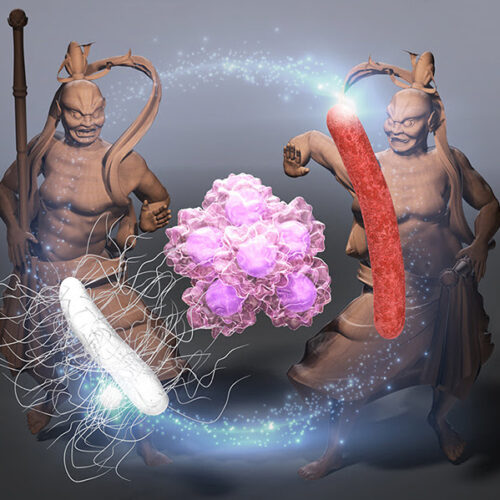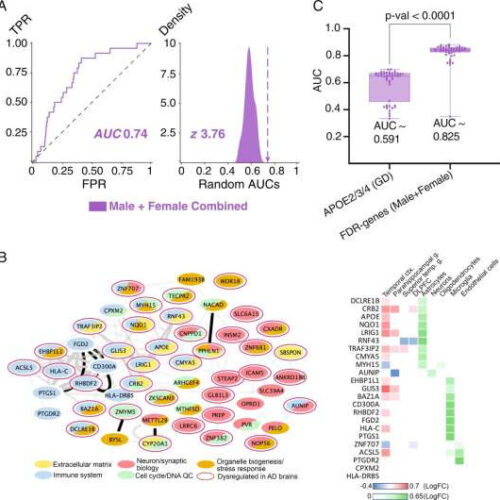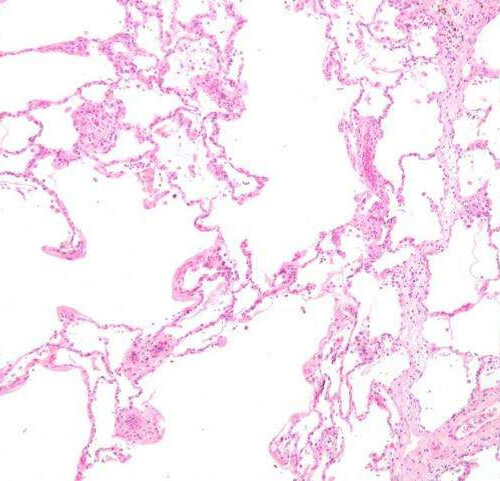by National Institutes of Health Credit: Unsplash/CC0 Public Domain For the first time, researchers have recorded pain-related data from inside the brain of individuals with chronic pain disorders caused by stroke or amputation (phantom limb pain). A long sought-after goal has been to understand how pain is represented by brain activity and how to modulate that activity to...
Long COVID Seems to Make Distinct Changes to The Immune System
HEALTH 21 May 2023 By FELICITY NELSON (Oleg Breslavtsev/Getty Images) Long COVID has more than 200 potential symptoms and can affect almost every organ in the body. With more than 65 million people now estimated to live with this often-disabling condition worldwide, and numbers growing daily, there is a desperate need to understand the underlying biology driving it. There are...
NPR-8: The Protein That Could Extend Human Lifespan in a Warming World
By WASHINGTON STATE UNIVERSITY MAY 22, 2023 New research indicates that lifespan in warm climates is not just passively shortened due to increased metabolic rate but is also actively regulated by a nervous system protein called NPR-8, which controls collagen expression. They found that worms lacking this protein had increased collagen expression in warmer temperatures, thereby exhibiting increased stress...
BRAIN ACTIVITY DECODER TRANSLATES THOUGHTS INTO TEXT
The system might help people who are mentally conscious yet unable to physically speak, such as those debilitated by strokes, to communicate intelligibly again. The study in the journal Nature Neuroscience was led by Jerry Tang, a doctoral student in computer science, and Alex Huth, an assistant professor of neuroscience and computer science at the University of Texas at...
Intratumoral Bacteria as an Injectable Anti-Cancer Treatment
MAY 19TH, 2023 CONN HASTINGS MEDICINE, ONCOLOGY Scientists at the Japan Advanced Institute of Science and Technology in Ishikawa, Japan have developed an anti-cancer treatment that consists of bacteria that are naturally found inside some tumors. Isolating and then injecting these bacteria into existing tumors appears to provoke a strong immune response that can lead to...
Machine-learning program reveals genes responsible for sex-specific differences in Alzheimer’s disease progression
by Texas Children’s Hospital The top 98 EAML genes are connected to GWAS genes, dysregulated in AD patients, and capable of separating AD and healthy control samples. Credit: Nature Communications (2023). DOI: 10.1038/s41467-023-38374-z Alzheimer’s disease (AD) is a complex neurodegenerative illness with genetic and environmental origins. Females experience faster cognitive decline and cerebral atrophy than males, while males...
Women appear to be more resilient to body clock disruptions than men, says new research
by Timothy Hearn, The Conversation One of the most common causes of circadian misalignment is shift work. Credit: Ground Picture/Shutterstock You might not know it, but we all have a clock ticking away inside us. This circadian clock operates on roughly a 24-hour cycle. It influences when we sleep, wake and eat, among other things. However, our body clock...
Study linking mucus plugs and COPD mortality could help save lives
by Brigham and Women’s Hospital Micrograph showing emphysema (left – large empty spaces) and lung tissue with relative preservation of the alveoli (right). Credit: Wikipedia, CC-BY-SA 3.0 A retrospective analysis of patient data from the COPDGene study suggests that targeting mucus plugs could help prevent deaths from chronic obstructive pulmonary disease—the fourth leading cause of death...
Toxins from gut damage fat cells and drive weight gain, study suggests
PA Media Sun 21 May 2023 01.00 EDT Fragments of bacteria leaking into the body from the gut are damaging fat cells and driving weight gain, research suggests. Scientists at Nottingham Trent University have found that these microbe fragments, known as endotoxins, are able to enter the bloodstream and directly affect how well fat cells...
Are telomeres really the key to living longer, youthful lives?
Telomeres — the “caps” on the end of chromosomes that protect the DNA from damage — have been associated with greater longevity. In theory, longer telomeres should allow a cell to divide more times and therefore live longer. However, a new study has suggested that longer telomeres could increase a person’s risk of chronic health...








